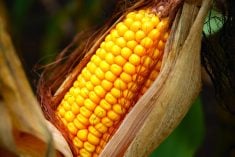Buenos Aires | Reuters — Argentine soy farmers who hold onto stock of more than five per cent of their production will face an elevated financing cost above the normal benchmark rate, the South American country’s central bank said on Thursday, part of a wider push to encourage sales.
The central bank said soy farmers over a certain size who hoarded their stock would face a minimum financing rate “equivalent to 120 per cent of the latest Monetary Policy rate.”
Argentina’s benchmark interest rate stands at 69.5 per cent.
Read Also

India slaps 30 per cent import duty on yellow peas
India has imposed a 30 per cent duty on yellow pea imports with a bill of lading date on or after Nov. 1, 2025.
Thursday’s announcement aims “to make credit more expensive so that it is more convenient to sell (soybeans) than to take credit,” a source familiar with the matter explained.
The source added that now “the rate of any line of credit is going to be more expensive” for soybean producers, whose minimum rate would start at 83.4 per cent under the new policy, the source said.
The move comes as part of an effort by authorities to replenish dwindling foreign currency reserves by pressuring soybean farmers to export more.
On Sunday, Economy Minister Sergio Massa set a preferential exchange rate for soybean producers, sending soybean exports surging earlier this week.
Argentina is the world’s top exporter of processed soy oil and soymeal and the No. 3 for raw soybeans, but farmers have been holding onto stock as a hedge against inflation and potential devaluation of the local peso currency (100 pesos = 93 Canadian cents).
— Reporting for Reuters by Maximilian Heath; writing by Adam Jourdan and Brendan O’Boyle.












